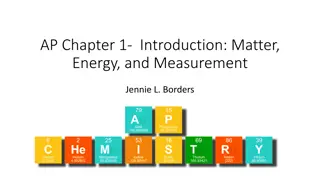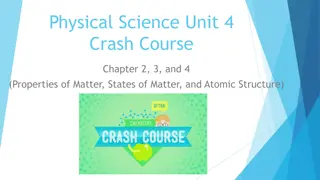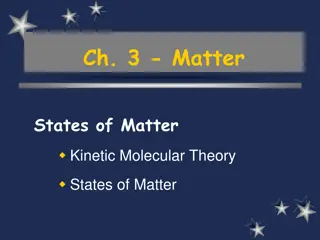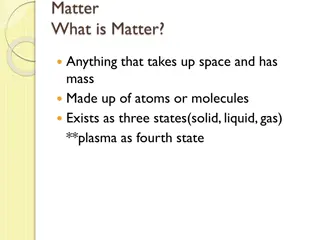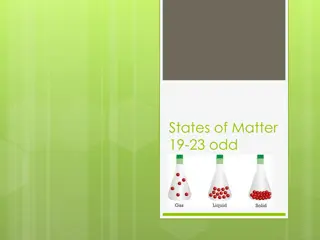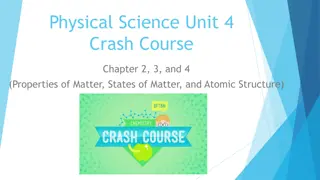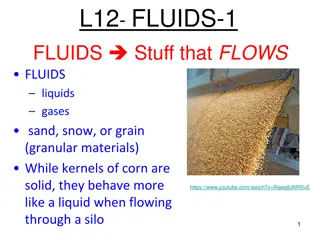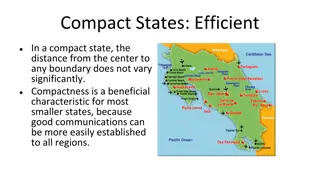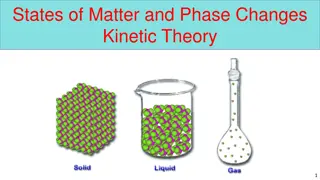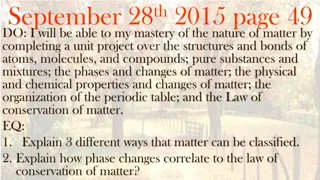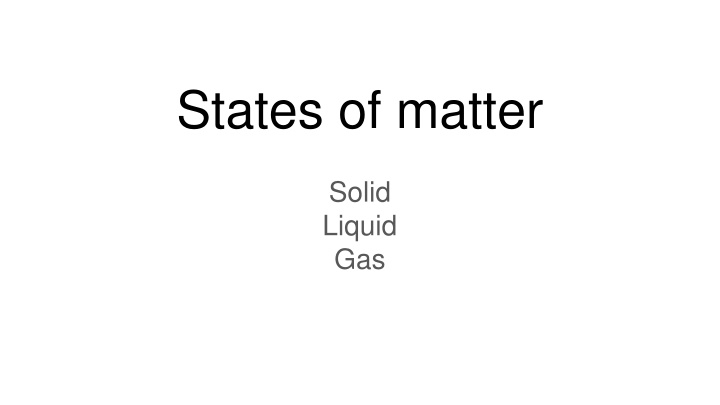
States of Matter and Phase Changes
Explore the properties of solid, liquid, and gas states, along with how heating and cooling can transform them. Learn about evaporation, condensation, and the water cycle in this informative content.
Download Presentation

Please find below an Image/Link to download the presentation.
The content on the website is provided AS IS for your information and personal use only. It may not be sold, licensed, or shared on other websites without obtaining consent from the author. If you encounter any issues during the download, it is possible that the publisher has removed the file from their server.
You are allowed to download the files provided on this website for personal or commercial use, subject to the condition that they are used lawfully. All files are the property of their respective owners.
The content on the website is provided AS IS for your information and personal use only. It may not be sold, licensed, or shared on other websites without obtaining consent from the author.
E N D
Presentation Transcript
States of matter Solid Liquid Gas
Solid Can be held as a single object. Keep their shape. Keeps the same volume.
Liquid Can flow or be poured. Change shape to the container they are poured into.
Gas Often invisible. They spread out and change shape to fit their container.
Heating ice (solid) turns to... Water (liquid)
Heating water (liquid) turns to... Vapour or steam (gas)
Cooling water (liquid) below its freezing point, turns it to... Ice (solid)
Cooling vapour or steam (gas), turns it to... Water (liquid)
To evaporate/ Evaporation The point when liquid turns to gas.
To condense/ Condensation The point when gas turns to liquid.
The water cycle The continuous system of water being recycled on planet Earth.

